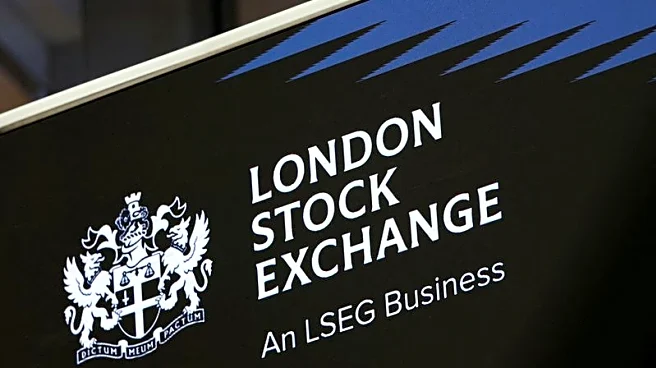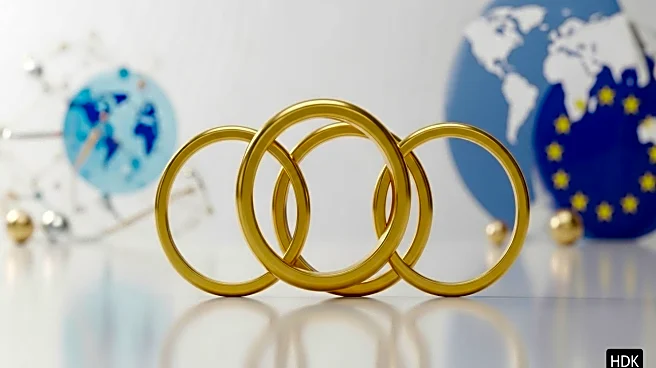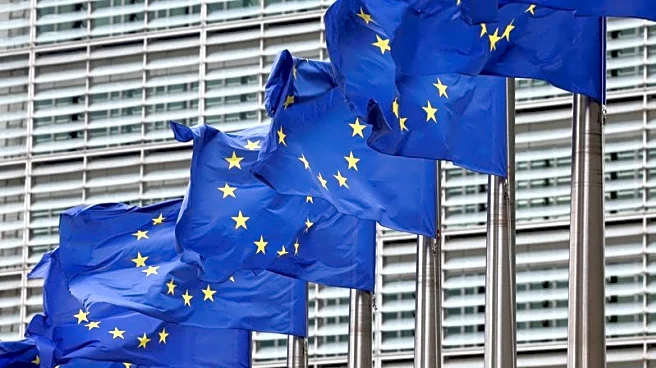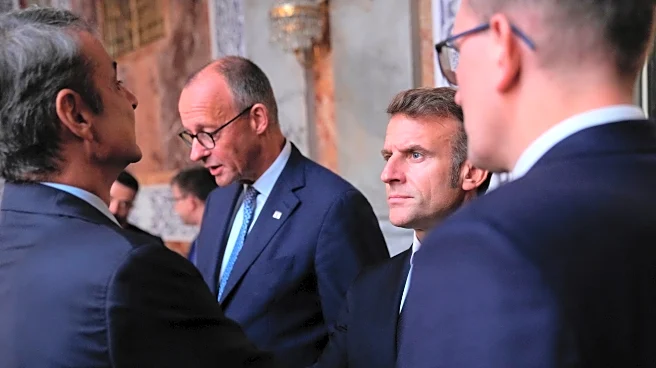What's Happening?
The European Central Bank (ECB) has announced its fourth consecutive interest rate cut, reducing its key deposit rate by 25 basis points to 2.75%. This decision comes as the eurozone faces weak economic growth and easing inflation, which is approaching the ECB's target of 2%. Despite the rate cuts, the labor market remains strong, with unemployment near historic lows at 6.3%. The ECB's move aims to support the European economy without reigniting inflationary pressures that were prevalent in 2022 and 2023.
Why It's Important?
The ECB's decision to cut interest rates is significant as it reflects ongoing challenges in the eurozone economy, including high energy costs, reduced demand from China, and geopolitical uncertainties from the Ukraine conflict. The rate cut is intended to stimulate economic activity, but it also highlights the delicate balance the ECB must maintain to avoid destabilizing employment. The easing inflation provides room for such monetary policy adjustments, but the broader impact on economic growth and stability remains a concern.
What's Next?
The ECB will likely continue monitoring economic indicators closely to assess the effectiveness of its rate cuts. Future decisions may depend on inflation trends and economic performance in key eurozone countries like Germany, France, and Italy. Stakeholders, including businesses and policymakers, will be watching for signs of economic recovery or further challenges that could necessitate additional policy interventions.
Beyond the Headlines
The ECB's rate cut may have broader implications for global financial markets, influencing investor confidence and capital flows. Additionally, the policy shift could affect international trade dynamics, particularly with countries heavily reliant on eurozone economic activity. The long-term impact on inflation and employment will be critical in shaping future ECB strategies.












